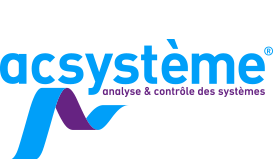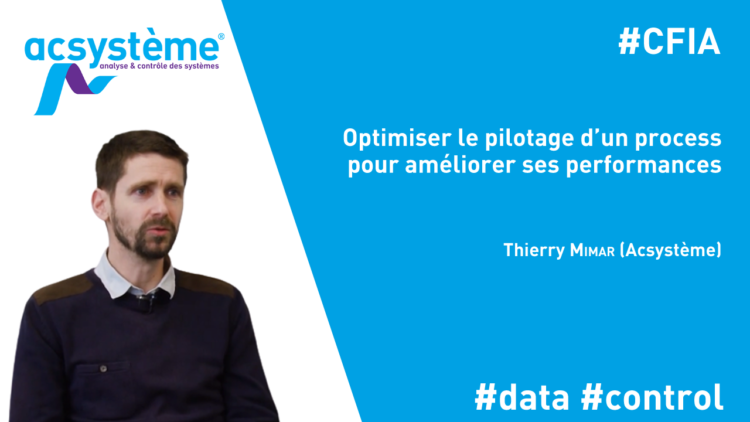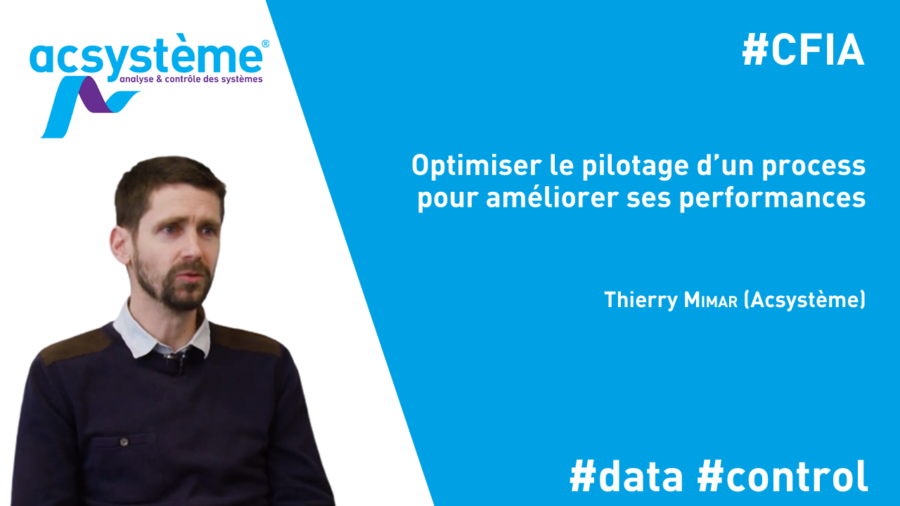I am Thierry Mimar from Acsystème. I have been a command-control engineer and project manager for fifteen years now. I work for key accounts, manufacturers in the automotive and energy sectors mainly. I work on various subjects for these large accounts, often with the aim of developing a control strategy for an actuator, a motor, a turbine, a cylinder, etc. The issues are relatively varied relating to this command-control.
– How can performance of a system be improved?
In general, to improve the performance of a process, we intervene at the control strategy level, the control law, often embedded in a calculator, a computer which generates commands for the process. We can perform tests on the system, but many tests are needed. It can be expensive when the tests are long, for production shutdown because the system must be stopped.
Sometimes it is just not possible because, for security reasons, the system cannot be tested; we cannot test some situations. So, our traditional approach is to develop a model, also called a “digital twin”. Once we have spent time validating this model, developing it, setting it up properly, we have something that enables us to simulate the dynamic behaviour of the system. From there on, in our approach we can develop control strategies. We will be able, to compare different control strategies, different settings, validate these settings on different scenarios, on different situations in the life of the system much more simply than if we had done this directly on the system.
– What are the different types of modelling for creating a digital twin?
There are different types of models, different approaches to modelling, to creating a digital twin depending on the data available to create it. There are cases where the process is not too complex and where we are able to model the behaviour of the process using physical equations. In this case, we develop what is called a “white box” model which will describe the process by its equations. These are dynamic equations, i.e. they describe the temporal relationships between the inputs and outputs of the model. With this type of model, once we have established the equations, what remains is to calibrate a certain number of parameters from data that will have been recovered from the real process.
For example, if we seek to model a dam, and what we seek to model is the evolution of the level of the dam according to its incoming flow and its outgoing flow, in a real case, we will measure incoming and outgoing flows and see the evolution of the level. We will seek to calibrate our model, to adjust the various parameters of the equations to reproduce in simulation the behaviour recorded on the real system.
The second approach concerns cases where it is more difficult to put the model into equations, we only have data, and we do not have a priori knowledge of the equations for the model. In these cases, we move towards a so-called “black box” modelling approach, which will only exploit data and try to identify, and calibrate a system, with fewer physical parameters, nevertheless representing this system. In the same way as for the white box model, we will try to validate this model on other datasets, confirm that the predictions for our model in simulation reproduce reality within a given tolerance.
– What are the main advantages of the digital twin for an energy producer for example?
An energy producer wants to make the best use of his means of production. For this, he needs to optimise the performance of his control strategy to make the most of the available energy when it comes to renewable energy, for example. In this context, modelling and numerical simulation are a real lever. We will be able to test different life cases, and all possible configurations.
In addition to helping to optimise the operation of the existing means of production, digital simulation can also help with sizing and, for example, studying scenarios for renovating the existing means of production. As an example, it will be possible in simulation to study what the gain would have been if it had been renovated using the data histories of the last “N” years of operation.
– What does data analysis add?
In addition to this simulation approach, data analysis, also known as “data science”, will allow us to go even further in optimising performance.
For example, in the case of a hydroelectric development we will be able to analyse weather data, tide data, temperature data, etc. which will allow us to feed our input control strategy to optimise its performance further, to make it more specialised perhaps depending on the scenario, such as the weather. Remaining in the field of energy production, data science will also make it possible to analyse consumer data using a history and to assist network managers in adapting their production or their demand for production on demand from the network.
– What is Acsystème’s approach to implementing a control strategy?
For us, the first step will be to specify the client’s expectations clearly in terms of performance and be aware of the input data available for the development of the control strategy.
From these elements, we start by establishing a digital model, either black box or white box, or sometimes between the two, from the data provided by the customer, data which may relate to the characteristics of the process to be controlled, and process test data. Once properly calibrated and validated, this digital twin of the process will enable us to have a means of reproducing the behaviour of the process in simulation.
Then we will be able to develop a control strategy that attempts to meet the objectives set in the specifications. At the end of the project, the manufacturer has 2 things: on the one hand, the results of the study explaining the work carried out, the modelling hypotheses, and the proposed control strategy as well as its adjustment and any recommendations for improvement when it is an existing strategy. The manufacturer also has the simulation environment that we developed for him, which we used for tuning but which he can then use to help him make decisions afterwards without having to stop the production process. Often at the end of a project we have to transfer knowledge and carry out training on the customer’s premises for those people who will carry on with what we have developed, i.e. use it.
– What is the benefit of this approach for a manufacturer?
In addition to the one-off optimisation of the performance of a process, the great advantage of this work approach, also called “model-based design”, is the possibility of reusing the simulation environment and improving the performance of its control law not just on an ad hoc basis but iteratively. It is also possible to transpose afterwards, to reuse all the environment set up on another process. It may be a similar production line but also a product.
For example, in the case of an industrialist developing a motorised product, he often has a whole range. So he will be able to adapt this environment to the different equipment in his range, to reuse this simulation environment for other products.


